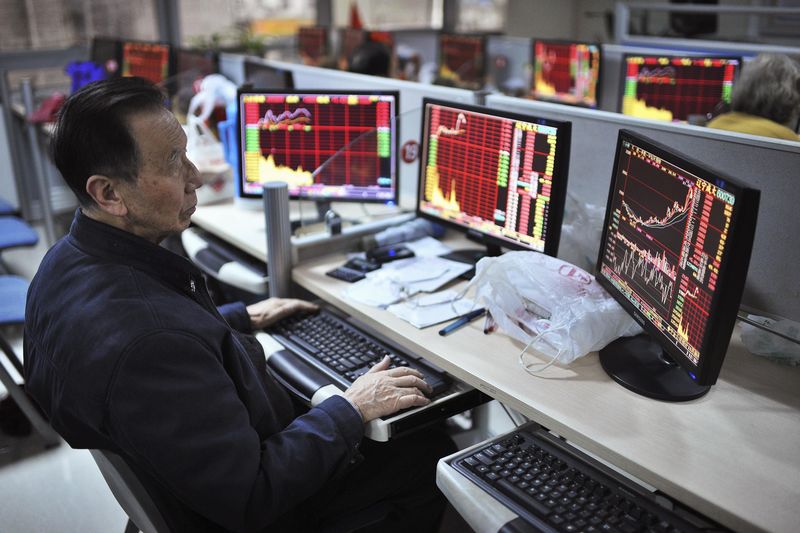USD/IDR Awaits Bank of Indonesia Interest Rate Decision
Investing.com - As investors anticipate the upcoming interest rate decision from the Bank of Indonesia on Thursday this week, the USD/IDR exchange rate has been fluctuating. The pair recently retested its highest level since June 5th at 15,000.
The Federal Reserve's recent decision to keep interest rates stable between 5% and 5.25% has contributed to the upward trend in USD/IDR exchange rates. Economists predict that Indonesia's central bank will also maintain its current rate of interest at 5.75%.
Since August last year, the Bank of Indonesia has been raising its interest rates from an initial level of 3.75%. Now standing at a rate of 5.75%, the goal is to combat inflation. The deposit facility rate is expected to remain steady at -50%, while the lending facility rate should stay put at around -6%.
Inflation in Indonesia appears well-managed; the latest data reveals consumer price index (CPI) increased by only 4% during May. This aligns with economists' expectations for Indonesian inflation levels to stabilize within the third quarter.
Indonesia’s economy continues performing strongly, benefitting from foreign direct investments (FDI) as companies migrate operations away from China. Demand for commodities such as steel, palm oil, coal, and nickel remains high.
As a result, the USD/IDR exchange rate has seen notable growth over the past few days, rising from a low point on May-14th up to an impressive high mark set on June-5000.In addition, the MACD indicator moved slightly above neutral while RSI maintained an upward trajectory.
Given these trends, it seems likely that USD/IDR will continue ascending toward the next major resistance level situated around 15,100. A break above key resistance points like those found earlier this month would confirm this outlook.
China's Traditional Festivals Set to Spark Consumer Market Growth
The Dragon Boat Festival, also known as Duanwu Festival, is expected to stimulate strong consumer spending in China this year, as traditional festivals increasingly drive consumption and products associated with the celebration enjoy significant sales growth.
For instance, zongzi – a traditional glutinous rice dumpling wrapped in bamboo or reed leaves – has seen its sales double at some Beijing supermarkets during the festival season. Major brands have also released limited edition products specifically for the event which often sell out before the festival begins.
According to He Jianhua of the Shanghai Academy of Social Sciences, both holiday and festival economies have become catalysts for consumption and key drivers of economic growth. The three-day Dragon Boat Festival holiday is particularly popular for travel; Chinese online travel agency Qunar reported that train tickets sold out on routes like Shanghai-Hangzhou and Shanghai-Qingdao as early as June 8th.
Furthermore, a report from Fliggy's showed a substantial increase in train bookings (over 30 times), air ticket reservations (sevenfold), and car rental bookings (nearly fourfold) compared to last year.
In response to these trends, various policies are being introduced by the National Development and Reform Commission to support recovery efforts and expand consumption further. These measures include enhancing service consumption potential while stabilizing automobile consumption through infrastructure improvements such as charging pile construction and energy storage facility upgrades.
As peak seasons like Dragon Boat Festival continue alongside summer vacations, leisure activities will be more prevalent among consumers along with increased demand for shopping experiences and tourism opportunities. Shu Jueting from the Ministry of Commerce predicts steady market growth throughout Q2 due to consistent consumer appetite coupled with effective promotional policies.
New Zealand Trade Deficit Expands Despite Rising Exports To China And US
New Zealand's trade deficit expanded in May, but an increase in exports to both China and the United States provided some relief. As a result, the Kiwi remains sensitive to fluctuations in trade terms.
The country's trade deficit grew from NZ$17,020 million to NZ$17,120 million while economists had forecasted a deficit of NZ$17,236 million. The monthly trade surplus narrowed from NZ$236 million to just NZ$46 million during this period.
According to Stats NZ data, goods exports rose by 2.8% (NZ$189 million) reaching a total of NZ $7 billion; imports also increased by 4.4% (NZD292m), amounting to nearly $6.9 billion.
A significant uptick in milk powder (+21%), butter and cheese exports contributed positively while crude oil (-52%) and logs/wood articles (-15%) experienced declines.
On the import side, exports of aircraft parts surged by 748%, mechanical machinery & equipment climbed by 19%, and vehicle parts/accessories grew by 15%. Meanwhile, fertilizer imports fell sharply (-71%), along with plastics/plastic articles (-24%) and iron/steel/articles(-26%).
Geographically speaking, exports destined for China increased by 18% YoY due mostly to dairy products such as milk powder, butter, and cheese. Conversely, exports sent to European Union declined by -11%.
